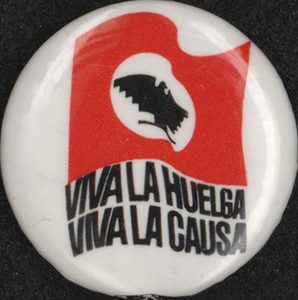The Chicano Movement of the 1960s, also known as El Movimento or the Chicano civil rights movement, extended the Mexican American movement with the goal of achieving Mexican American empowerment. Originally a deragatory term for referring to children with Mexican migrant parents, the term was embraced as a symbol of self-determination and pride. Famous figures like Dolores Huerta and Cesar Chavez are well known for their involvement with Chicano activism, particularly farm workers’ rights. The movement began in the late 1800s after the U.S.-Mexican War and gained momentum after World War II, with Chicano activists winning major landmark cases like Mendez v. Westminster, which ruled segregation of children of Mexican and Latino descent unconstitutional, and Hernandez v. Texas, which ruled that Mexican Americans and other subordinated peoples were guaranteed to equal protection under the 14th amendment.
In the 1960s, the Mexican American Legal Defense and Educational Fund (MALDEF) was founded to engage in political advocacy and training of future leaders. Similar to the NAACP Legal Defense and Educational Fund, the MALDEF now covers the roles of many other
organizations and continues to engage in activism today. In the 1970s, Chicana women engaged in reproductive rights activism by fighting against compulsory sterilization and succeeding in requiring the use of bilingual consent forms. The Chicano movement was not focused on any one organization or specific cause, and rather encompasses a number of sub-movements dedicated to issues that affected Chicano populations differently. Regardless, the influence of the movement is still felt today and ongoing.
Although the Southwest is the epicenter of the movement, Colorado is where people point to the movement’s beginnings. In California, however, many scholars note that the state had the most student organizations across university campuses engaged in Chicano activism, whereas other states did not participate in the same forms of student activism. In the midwest, Chicago was a hub for Chicano activism, and there were efforts throughout the rest of the midwest particularly for the United Farm Workers (which will be covered more in depth next week).
The initial goals of the movement were Chicano empowerment, anti-war, voting and political rights, police brutality, and more. In the 21st Century, the major focus of the Chicano Movement is still focused on empowering Chicano and Latinx peoples in elections and participating in government, representation of Chicano and Latinx persons in media, as well as immigration rights. Chicano art, literature, and presses fluorished during the beginning of the movement and continue to serve as a creative space for political expression. The history of the movement is rich and multi-faceted, and is complicated by a number of social and geographic variables that affected the way the various sub-movements took shape and shaped the larger movement.
SiRO and the Michigan State University Libraries have a number of resources on the history of the Chicano movement. Two highlights at MSU Libraries are the Midwest Chicano/Latino Activism Collection (housed in special collections and digitized in SiRO and here:https://d.lib.msu.edu/mic
Resources:
MICHILAC Collection at MSU Libraries
Library of Congress Chicano Civil Rights Movement Collection
UC Santa Barbara Chicano and Latino Collections
Colorado Chicano Movement History Portal
